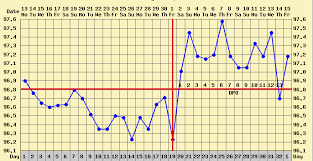BBT Fertility Tracking Tool
The most important fertility tracking tool – your BBT
Basal Body Temperature (BBT) charting is often used as a way of tracking hormonal changes, and is a useful tool for all women of menstruating age who are suffering from gynecological or hormonal problems, or who are wanting to conceive. They can also help to identify issues with metabolism, adrenal and thyroid function, and can be useful for tracking the progress of a person with chronic fatigue syndrome. Men can also take note of their BBT, this information can be useful for a Chinese Medicine practitioner as one possible diagnostic measure of male fertility.
BBT charts help to keep track of the pattern of hormonal fluctuations within the female body, and are often used in consultations at our clinic to help your practitioner determine the best treatment regime for the pre and post ovulation times of your cycle. The chart can help to identify which part of your cycle (if any) needs to be supported, it can help you to identify your most fertile days as well as the day of ovulation. It can also show whether factors such as stress, fatigue or lifestyle choices might be contributing to your hormonal imbalance. This information can be used to help to bring your hormones into harmony, as a way of addressing gynecological problems, or to improve your fertility.
On waking, while still in bed, before you get up, take your temperature under your tongue . An ovulation thermometer is more accurate within the normal body temperature range, it will record your temperature to two decimal places and is the better choice than a regular thermometer.
It is important when charting your BBT that your temperature is read after at least 3 hours of sleep, at roughly the same time each morning (within a couple of hours is ok). Taking your temperature after sleeping in, or after you’ve already been awake for 5-10 minutes will give a false high reading. If you wake in the morning and plan to go back to sleep, take your temperature the first time you wake – before falling asleep again.
You can start charting at any time of your cycle, mark down which day of your cycle you are on if you know it, day one of your menstrual cycle is the first day of bleeding. For women not having periods, or having them sporadically, may need to chart for longer before a pattern emerges.
Most important is to work with a practitioner who is experienced in reading BBT charts. If your cycles are irregular, or you are having problems with your period or problems conceiving, your chart will often not follow the typical pattern you’re told to expect. A lot of women give up on taking their temperature if they don’t understand their temperature pattern. A natural fertility expert knows how to interpret your temperature graph and use it to inform your treatment program to corrects your hormonal imbalance and restores optimal reproductive health.
